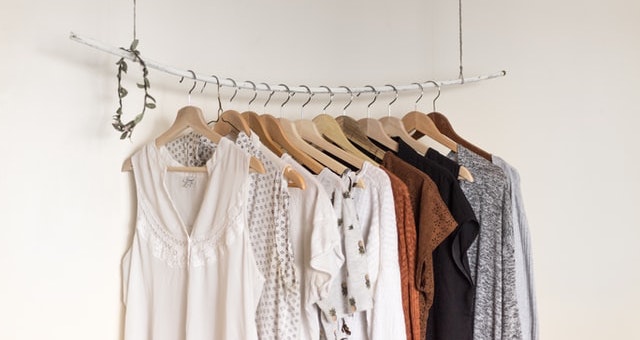
The reasons mentioned by the buyers of second-hand clothes are numerous, but the one that comes back constantly, is the price factor. Rather cheap compared to new clothes or those from the African textile art, second-hand clothes are a good deal for those who want to dress cheaper. However, the impact it has on the suffering local textile sector deserves attention.
AFRICA, THE LARGEST COUNTER OF SECOND-HAND CLOTHES
The African continent is the biggest consumer of second-hand clothes despite the tons of cotton it produces and supplies to the textile industry. A paradox that nevertheless has an explanation if we take into account certain realities that the continent is experiencing, including the purchasing power of its inhabitants which has drastically declined over the years due to the problems of conjuncture and constant currency depressions.
Formerly rejected in some countries where the textile and clothing industry was booming, trade in second-hand clothing is now a windfall in Africa, especially in the sub-Saharan region where it supplies a large market. Cost-effective for many resourceful traders who have made it their daily livelihood, this industry is selling other accessories in addition to the second-hand clothes including shoes, hats, belts, bags and even jewelry.
Second-hand clothes are supplied by Europe and America. The United Kingdom and the United States are the largest suppliers on earth. Africa, where most countries are experiencing faltering economies and a rather low standard of living, is the biggest outlet for this sector.
Each year, it receives tons of clothes from these two continents that obviously benefit from the practice because the amount of money that these goods generate from their point of departure in the western world is estimated at billions of euros.
In addition to the price factor, second-hand clothes from Europe and America are acclaimed by Africans for its quality compared to Chinese clothing and accessories that cost less but the quality remains deplorable.
The quantity of second-hand clothes dumped on the African continent has increased considerably in the last decade. A boom which is explained by the perpetual evolution of fashion to which a lot of worship is devoted in the Western world. Shopping, revamping, renewing the wardrobe have become an obsession for the European and American populations.
A study of this over consumption in the clothing sector conducted by the University of Cambridge reveals that the purchase of clothing has almost quadrupled in Europe in the last decade.
AFRICAN TEXTILE: A SUFFERING INDUSTRY
Although many young Africans are comfortable with buying second-hand clothes in order to follow the Western fashion without necessarily spending huge amounts of money, it is a real obstacle to the development of African textiles, a nightmare for many designers and dressmakers who must do with a reduced number of customers despite the continent’s strong demographic potential.
Actors in this sector, which faces a lack of support from the public authorities, propose as a solution to put an end to the excessive use of clothing that westerners no longer want, the setting up of a real industrialization policy that will encourage the creation of factories for the production of clothing. They deplore, among other things, the lack of investors bold enough to finance such initiatives. Yet African fashion is on the rise.
In Europe and America, many creators are inspired by African trends and fabrics to enrich their collections. According to Oxfam, an organization that does humanitarian work, importing second-hand clothes costs Africa an average of US $ 42.5 million a year. A sum that should be invested in the production of fabrics and clothing in local cotton.
Saving the African textile sector requires strong action. This is what the Rwandan President Paul Kagame understood by announcing his country’s intention to stop the importation of clothes and shoes already used from the country of Uncle Sam.
RWANDA IS DETERMINED TO STOP THE USAGE OF SECOND-HAND CLOTHES
Motivated by his desire to promote “Made in Rwanda”, President Paul Kagame decided in 2016 with his Kenyan, Tanzanian and Ugandan counterparts to gradually suspend the importation of second-hand clothes from the United States.
Washington’s response was quick. The United States immediately threatened to withdraw these countries from the African Growth Opportunity Act (AGOA), an agreement that guarantees certain countries of the continent the right to sell their products on the American market without any customs for a 10-year period from 2015 to 2025. The veto of the Americans has borne fruit since Kenya, which alone accounts for nearly three quarters of East African exports to the United States, quickly retracted. But Rwanda, which remains committed to developing its textile industry, intends to implement its decision despite warnings from Washington.
Ending imports of second-hand clothes to promote the local clothing manufacturing industry is for the Rwandan leader a necessity for the development of his country. The one who has always campaigned for the creation of a continental free trade zone, argues that it is time for Africa to rid itself of the prejudices that make it an eternal “assisted” to become a serious partner in the global market.
And that goes through a valuation of local products likely to vent its authenticity. The time to believe it has come so that this beautiful continent whose textile industry has given birth over the years to valuable fabrics such as “Baoulé loin” cloths of Ivory Coast, “Bogolan” of Mali, the Ndop of Cameroon or the “kenté “of Ghana can assert itself in the world of fashion and also give the opportunity to its people to dress well with good quality clothes that enhance its cultural identity.
But this fight cannot be won without a real desire of African consumers called on their side not only to focus on the low end but to make efforts to favor the criterion “quality and authenticity” when buying their products in order to encourage African tailors and designers who are increasingly showing great creativity in the clothing industry.
































